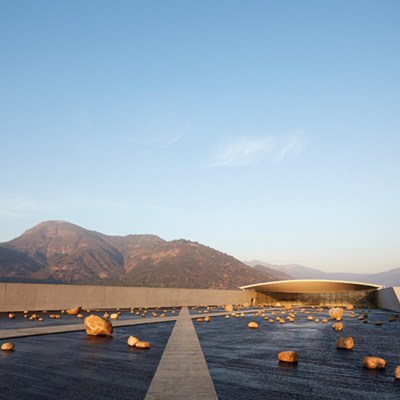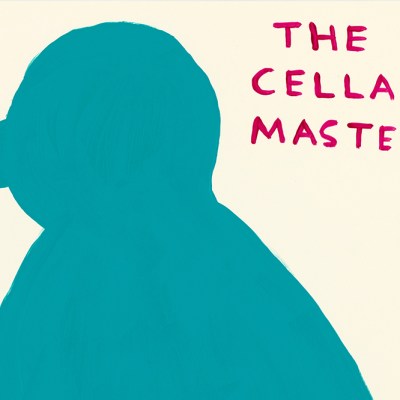From the July/August 2022 issue of Apollo. Preview and subscribe here.
Imagine you are walking through a pristine museum displaying the greatest artists of the 20th century – Picasso, Dalí, Miró, Warhol, Freud, Bacon – leading up to the most notable contemporary names, such as Richter and Kentridge. Then imagine being rewarded for that experience with a taste of a perfectly constructed claret to finish.
This fantasy is made real at Château Mouton Rothschild in the Médoc, where wine and art have been fermenting together for almost 100 years. In 1924, the graphic designer Jean Carlu was commissioned by Baron Philippe de Rothschild to create the label for that vintage to mark the Mise en bouteille au Château – a description for his new method of bottling, labelling and storing wine in cellars on the estate. This had never occurred in the history of winemaking. Until that point, barrels were sent to merchants for bottling – this allowed the Rothschilds to control fully the quality of the wine from vine to bottle. Every step of production could take place on the Château’s 84 hectares, ensuring the terroir infused each technical step of the family’s winemaking.
Discerning drinkers understandably celebrate the prestige and sense of occasion that accompanies tasting Bordeaux First Growth wine. Taken as a whole, the Mouton Rothschild project is as complex as the blend of one of its grand crus. The Rothschilds were innovators in creating this particular art collection in response to this particular wine. They developed the business of Bordeaux winemaking both through their eccentricity and by pursuing their vision in this strict appellation. ‘The wine came first – it was a way of doing things differently from how things had been done before,’ says Julien de Beaumarchais de Rothschild, who owns the estate along with his siblings. This independent spirit was eventually rewarded when the winery was upgraded to the highest distinction of ‘Premier Cru’ in 1973. ‘Then art came,’ he says, ‘to accompany us and to be our partner in this adventure.’
The partnership took time to develop: Carlu’s label was not met with enthusiasm by the Bordeaux wine trade and during the Second World War the Rothschilds had other concerns. So the commissions were paused until 1945, when the young artist Philippe Jullian reignited the tradition, celebrating the end of the war with a label bearing ‘V’ for victory.
For the next decade, the label designs continued, created by a coterie of artists in the theatre world, including Jean Cocteau, Léonor Fini and Jean Hugo. In 1955 Georges Braque asked to design the label for a bottle and it became ‘a gamechanger’ according to Rothschild. After that, the artists kept coming, each label a testament to the spirit of friendship between artist and family with its own backstory, anecdotes and archival material.
The label of the Château Mouton Rothschild 2019 vintage bears a design by Olafur Eliasson. Photo: © Alain Benoit/Deepix

The stories surrounding the labels abound: Max Ernst was originally commissioned to produce one for 1965, which the family rejected, and instead handed the project to his wife Dorothea Tanning. The Rothschilds pursued Balthus for years before he accepted the commission. They even asked his wife, Setsuko Klowssowska de Rola, to design the label for the 1991 vintage as part of a campaign to win him over. He finally accepted in 1993. His label featured a typical nude drawing that was banned in America. In its place, the US governement issued a blank label for all bottles sold, suggesting de gustibus est disputandum for that market.
All these stories are now told at the private Paintings for the Labels Museum, originally built by Philippine de Rothschild in 2013 as a permanent home for the original label artworks, which have been on an international tour for more than 60 years. The space has been reimagined under the artistic direction of Julien, with display cases designed by Francis Lacloche housing sketches, handwritten notes, archival photographs and the original artworks for all 74 vintages.
Olafur Eliasson, the latest artist of the 2019 vintage, accepted the commission because he was ‘fascinated by the Rothschild family’s long history of working with artists’ and wanted to be part of that tradition. He sees himself ‘as part of a river. The many artists here are inspiring, as together they have shaped the river that I am now part of.’ For his work, the Solar Iris of Mouton, the artist documented the journey of the sun around the vines and how this affects winemaking and taste. The image combines gold and midnight blue, for day and night, surrounding a cut-out (the first on a label), representing the Château, and a procession of ellipses in varying arcs to depict the path of the sun around the estate.
Winemaking is mythmaking at Mouton Rothschild, and the artists’ involvement augments this. Eliasson says he was also intrigued by the ‘mythical dimension’ of wine and ‘was curious to understand not so much how it is made as why it is considered one of the best’. The perfect vintage comes from a combination of the natural factors of the vineyard and the manual skills that go into blending and producing it; a quality vintage can never be repeated. In the same way, this art collection cannot be replicated. It is always the result of a response to a particular time and terroir. As Julien says: ‘If someone tried to repeat what has been done at Mouton since 1945, it would not be possible. You would not have the exact vintages or the exact artists responding the way they did. What has been made is absolutely unique for each vintage and the particular time and place.’
From the July/August 2022 issue of Apollo. Preview and subscribe here.


